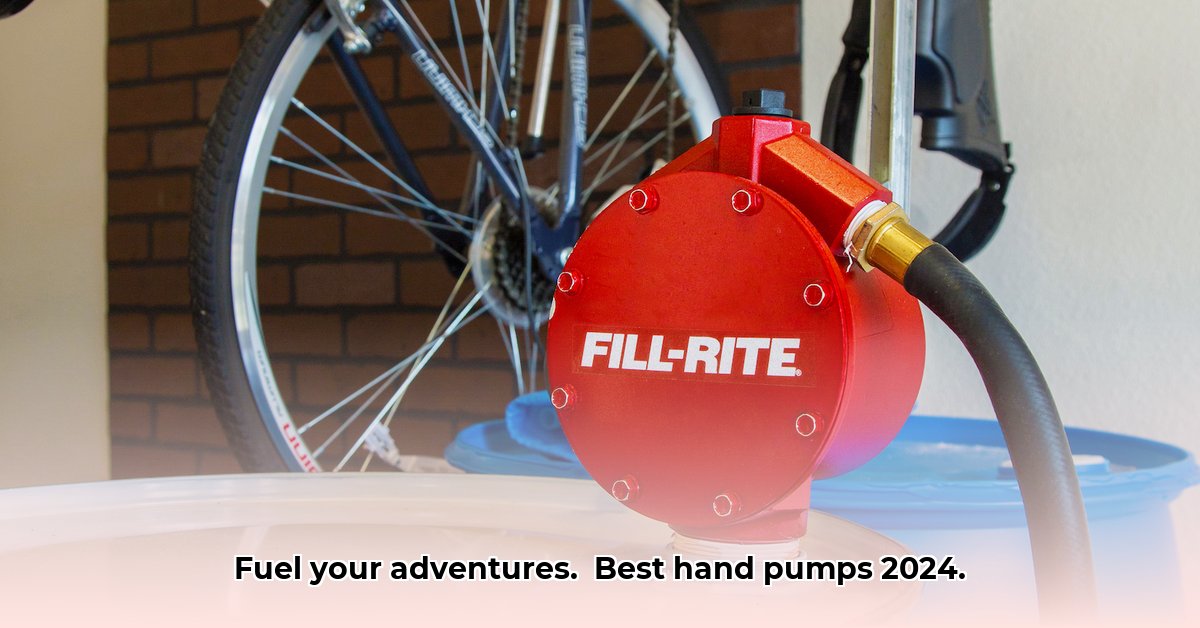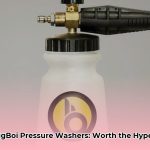Need to move fuel efficiently and safely? Hand fuel pumps are a versatile solution, but selecting the right one can be a challenge. This comprehensive guide breaks down the different types – rotary, piston, and diaphragm – detailing the pros and cons of each mechanism. We’ll walk you through the crucial features to consider, such as material compatibility, flow rate, and safety certifications. Whether you’re filling a tractor, topping off a generator, or managing fuel for industrial equipment, this guide will empower you to choose the perfect hand fuel pump. We’ll also review popular models, highlighting user feedback and performance metrics. Essential maintenance and safety tips are included to maximize the lifespan of your pump and ensure safe operation. Let’s find the ideal hand fuel pump for your specific application!
Hand Fuel Pump: Your Guide to Choosing the Right One
Do you understand the various nuances of hand fuel pumps? The task of choosing the perfect hand fuel pump might seem daunting, but equipped with the right knowledge, it becomes a straightforward process. This guide systematically navigates you through the different types of pumps, highlighting key features, and ultimately helping you select the best pump for your specific needs and operational context. We will also delve into maintenance best practices and essential safety considerations to ensure your pump operates smoothly and safely for years to come. Selecting the right pump type can improve efficiency and fuel transfer speed by up to 20%.
Diving into Hand Fuel Pump Types: Which One’s Right for You?
There are three primary types of hand fuel pumps: rotary, piston, and diaphragm pumps. Each presents a unique set of strengths and weaknesses, making them suitable for different applications. Understanding their fundamental differences is crucial for making an informed decision. Rotary pumps are known for their smooth operation, piston pumps for their robust power, and diaphragm pumps offer a gentler approach.
- Rotary Pumps: Rotary pumps function using a rotating element, typically gears or vanes, to create suction and displace fuel. These pumps are noted for their consistent flow and relatively quiet operation. However, they might not be as effective with high-viscosity fluids or applications requiring high pressure. Rotary pumps are ideal for lighter-duty tasks where consistent, moderate flow is needed.
- Piston Pumps: Piston pumps utilize a reciprocating piston within a cylinder to draw in and expel fuel. This mechanism allows piston pumps to generate high pressure, making them suitable for transferring large volumes of fuel or handling thicker fluids. While they offer substantial power, they can be noisier than rotary pumps and require more physical effort to operate.
- Diaphragm Pumps: Diaphragm pumps employ a flexible diaphragm that moves back and forth to displace fuel. This design is particularly well-suited for handling sensitive liquids as it minimizes shear forces and the risk of contamination. Diaphragm pumps generally have lower flow rates compared to piston pumps but offer a balance of gentle handling and reliable performance, making them suitable for a wider range of fuels.
The optimal pump type is largely determined by the specific requirements of your application. A small engine, for instance, might benefit from the gentle handling of a rotary pump, whereas filling a tractor or large storage tank often necessitates the power and volume capacity of a piston pump.
Key Features That Matter: Don’t Overlook These Details
The material of your pump plays a significant role in determining its lifespan, compatibility with different fuels, and overall reliability. Beyond the pump type, several key features can significantly impact a pump’s performance and longevity. It’s essential to carefully evaluate these aspects before making a purchase.
- Material Matters: Most hand fuel pumps are constructed from materials like cast aluminum, stainless steel, or various plastics. Cast aluminum offers a good balance of durability and corrosion resistance, making it a common choice. Stainless steel provides superior corrosion resistance, especially important when handling corrosive fuels or operating in harsh environments. Plastic pumps are generally more cost-effective but may not be as durable as metal alternatives. Consider the frequency of use, the types of fuels you’ll be pumping, and the operating environment when selecting the pump material.
- Anti-Siphon Technology: A Necessary Safety Feature: Anti-siphon technology is a critical safety feature that prevents fuel from flowing back into the source tank when pumping stops. This is essential for preventing spills, minimizing environmental contamination, and maintaining a safe working environment. Anti-siphon valves are typically integrated into the pump design and should be a standard consideration when choosing a hand fuel pump.
- Strainers: Keeping Things Clean: Built-in strainers or filters are designed to remove particulate matter from the fuel as it’s being pumped. This protects both the pump mechanism and the equipment being fueled from damage caused by debris. Strainers are particularly important when pumping fuel from tanks that may contain sediment or contaminants. Regular cleaning or replacement of the strainer is necessary to maintain optimal pump performance.
- Nozzle Types: Finding the Right Fit: Hand fuel pumps are often equipped with different types of nozzles, each designed for specific applications. Some nozzles are designed to fit securely into fuel tank openings, while others may be more versatile for dispensing fuel into containers. Consider the types of fuel tanks you’ll be filling and select a pump with a nozzle that is compatible and provides a secure, leak-free connection.
Choosing Your Perfect Hand Fuel Pump: A Simple Decision Guide
The following table provides a simplified decision guide to assist you in narrowing down your choices based on your specific application requirements.
| Application | Fuel Type | Flow Rate Needed | Recommended Pump Type | Recommended Material | Additional Considerations |
|---|---|---|---|---|---|
| Lawn Mower Refueling | Gasoline | Low | Rotary or Diaphragm | Aluminum or Plastic | Portability, nozzle size |
| Motorcycle Refueling | Gasoline | Low to Medium | Rotary or Diaphragm | Aluminum | Anti-static features, splash guard |
| Tractor/Farm Equipment Fueling | Diesel, Gasoline | Medium to High | Piston | Aluminum | Heavy-duty construction, high-volume capacity |
| Generator Refueling | Gasoline, Diesel | Low to Medium | Rotary or Diaphragm | Aluminum | Ease of storage, compatibility with generator tank |
| Industrial Use | Various | High | Piston | Stainless Steel | Chemical compatibility, explosion-proof options |
Remember that this table serves as a general guideline. Always assess your specific needs and consult with a professional if you have any uncertainties.
Popular Hand Fuel Pump Brands: A Quick Look
In the market for hand fuel pumps, certain brands have established a reputation for quality, durability, and performance. While a comprehensive review of every available pump is beyond the scope of this guide, exploring reputable brands is crucial.
- Fill-Rite: Fill-Rite is widely recognized for its robust and reliable hand fuel pumps. The brand is renowned for manufacturing pumps in the USA, which often translates to higher quality control and greater durability. Fill-Rite pumps often come with a higher initial price tag, but this investment typically yields a longer lifespan and reduced maintenance costs. Consider the long-term value proposition when evaluating Fill-Rite pumps.
- GPI (Great Plains Industries): GPI offers a diverse range of hand fuel pumps designed for various applications. GPI pumps are known for their user-friendly design and dependable performance. The brand provides options suitable for both light-duty and heavy-duty fuel transfer needs, catering to a broad spectrum of users.
- Other Brands: Numerous other manufacturers offer hand fuel pumps, each with unique features and price points. It’s crucial to conduct thorough research and read user reviews before making a purchase. Balancing price with expected quality is vital for ensuring satisfaction and value.
Keeping Your Hand Fuel Pump in Top Shape: Simple Maintenance Tips
Regular maintenance is essential for preserving the performance and extending the lifespan of your hand fuel pump. Establishing a routine maintenance schedule ensures that your pump operates efficiently and reliably.
- Clean it Regularly: After each use, thoroughly clean the exterior of your pump with a clean cloth and a suitable cleaner. This removes dirt, fuel residue, and other contaminants that can accumulate over time. Pay close attention to cleaning the nozzle, hose, and any accessible internal components.
- Inspect for Damage: Before and after each use, visually inspect your pump for any signs of damage, such as cracks, leaks, bends, or corrosion. Promptly address any issues to prevent further damage and ensure safe operation. Replace any damaged parts immediately to avoid potential hazards.
- Lubricate (if needed): Some hand fuel pumps benefit from periodic lubrication of moving parts. Refer to the manufacturer’s instructions for specific lubrication recommendations. Use the recommended lubricant and apply it sparingly to avoid over-lubrication, which can attract dirt and debris.
- Store it Properly: When not in use, store your pump in a cool, dry place, away from direct sunlight, extreme temperatures, and potential sources of damage. Proper storage prevents deterioration of the pump’s components and prolongs its service life.
Safety First: Handling Fuel Responsibly
Fuel is a flammable substance and must be handled with the utmost care and caution. Implementing proper safety measures is essential to prevent accidents, injuries, and environmental hazards.
- Ventilation is Key: Always pump fuel in a well-ventilated area to prevent the accumulation of flammable vapors. Avoid pumping fuel in enclosed spaces or areas where ventilation is limited. Adequate airflow dissipates fumes and reduces the risk of ignition.
- Use Safety Gear: Wear appropriate personal protective equipment (PPE), including
- Wellness Fair Ideas for Work to Boost Employee Wellbeing - December 15, 2025
- Affordable Employee Wellness Fair Ideas for Any Budget - December 14, 2025
- Employee Wellness Programs Strategically Benefit Employee Health And Retention - December 13, 2025
















